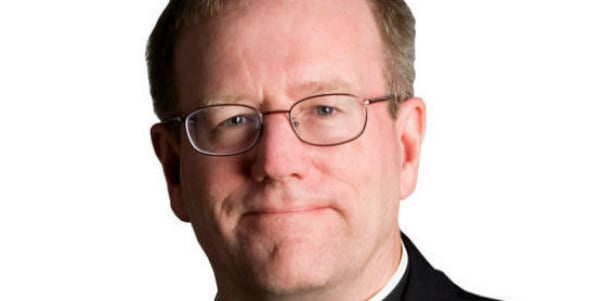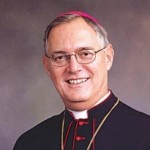The other day I posted a homily written and delivered by a pal of mine who is taking a homiletics class in preparation for his ordination as a permanent Deacon in the R.C. Church.
Last week’s homily was good. This one is dynamite. It’s provocative, faith-filled, challenging and it will make you think in ways you might not have, before.
What Would Mary Do?
by Greg Kandra
His name was Charles Sheldon – and he is one of the most influential preachers and spiritual writers in American history. Don’t be surprised if you haven’t heard of him. Until I started looking into this a few days ago, I hadn’t heard of him, either.
In 1896, Sheldon published a novel called In His Steps, about a small Kansas town that decided to try and live by a simple credo … summed up in four short words. What Would Jesus Do? Well, the rest is history. Sheldon’s book went on to be published in 21 languages around the world, and the central idea of it became one of the most familiar slogans in popular Christianity. You find it – or its abbreviation, WWJD – on tee shirts, bumper stickers and wristbands.
As Catholic Christians, it’s fair to ask ourselves at important moments of choosing What Would Jesus Do?
But on this feast day (The Annunciation, March 25)…I’d like to challenge you with another question. WWMD? What Would Mary Do?
She was the first disciple – the model for us all – and in her life and in her choices we can gain insight that can help guide our lives, and our choices…beginning with today’s gospel.
When an angel arrives in Nazareth, and tells a peasant girl that she is about to become the mother of the Son of God … what does Mary do? She is young, 12 or 13. She’s not married, doesn’t appear to have a lot of money. Does she try to change things? Does she consider this whole idea unacceptable? Does she bargain or beg or badger?
No. She reacts with breathtaking humility. Mary says: “Behold. I am the handmaid of the Lord. May it be done to me according to your word.”
A generation later, her Son would echo that idea in the most famous prayer ever composed: “Thy will be done.” I wouldn’t be surprised if He learned that from his mother.
We can learn from her, too.
When the life we have planned suddenly takes a turn we didn’t expect …when the job falls through, or the loan is rejected, or the doctor announces that you’ll soon have another mouth to feed … maybe we should ask ourselves: what would Mary do?
After the Annunciation, Mary sets off to visit her cousin Elizabeth –to help in the final months of her cousin’s own pregnancy. What does Mary do? Is she hysterical? Does she complain? No. She says these words of praise to God: “The Almighty has done great things for me, and holy is His name.” At this moment, she doesn’t think of herself, her situation, the crisis that she now finds herself facing. She is a young, unmarried pregnant girl – one who, according to the justice of her day, could have been stoned to death. She doesn’t go into hiding. No. She goes out into the world, seeking instead to serve another…and to serve God.
When we find our lives turned upside down … what would Mary do? When we are tempted to think only about ourselves and our own problems…what would Mary do? When there is an opportunity to serve, to help, to offer hope, to make ourselves present, truly present, in the life of another… what would Mary do?
Mary makes other appearances in the gospels, but one that stays with me is at the wedding in Cana. This could be considered her benediction to the world – her advice to a seeking and uncertain Church. In the middle of a wedding, a ceremony celebrating life and community – a new beginning — she points to her son, and says: “Do whatever He tells you.”
It is a powerful testament of faith – and Mary’s final words in the gospels. It’s a statement so significant, Cardinal Archbishop Sean O’Malley of Boston even chose it as his motto.
Do whatever He tells you.
Perhaps, that is the ultimate lesson of fidelity and humility from Christ’s first disciple.
When we seek guidance or direction … what would Mary do? When we are torn between difficult choices — on the job or in life — which one should we make?
What would Mary do? She’d point to her son and say, “Do whatever He tells you.”
What you hear in those words is a lifetime of wisdom and experience – and holiness.
And it began, really, on this feast that we celebrate today. To your right, in this beautiful church, there is a window that depicts the moment of the Annunciation. Gabriel is speaking to Mary…the Holy Spirit is present in the form of a dove…and there is Mary, looking up from a book.
Think for a moment about that image. Mary is studying the word…at the moment she begins to carry The Word.
It is a reminder to us that Mary was the “First Tabernacle.” The first to carry Jesus, and shelter him. In a few moments, we’ll receive the fruits of that tabernacle, in the Eucharist. And the salvation of the world, first made present within Mary, will be present, as well, within us.
Like Mary, we will become tabernacles for Christ.
Savor that opportunity, especially today. Because today we celebrate the moment when our salvation was proclaimed. The impossible became possible. A stranger announced the presence of God, and a girl looked up from her book to declare her assent – her willingness – to take part in the greatest mystery in human history.
Every day, we are invited to share in that mystery – to carry Christ within us, and to bring Him to others.
When God offers us that invitation, it’s worth asking ourselves: “What would Mary do?”
Also by Greg Kandra: Holding Fast and Having Faith











